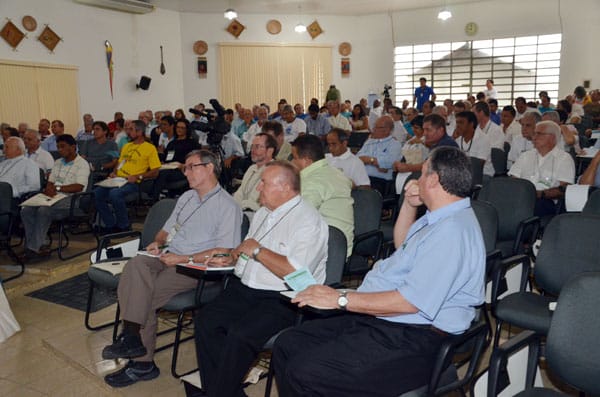The 57 dioceses in Amazonia occupy 61% of Brazilian national territory. They incude nine States: Acre, Amazonas, Roraima, Rondonia, Mato Grosso del Norte, Pará, Amapá, Tocantins and Maranhão. Altogether 174 people took part lay, religious and bishops. Cardinal Claudio Hummes who is the President of the Episcopal Commission for Amazonia of the Brazilian Bishops’ Conference chaired the gathering. Some retired bishops, pastoral coordinators from every church territory together with representatives from the main religious and pastoral concerns were also there.
Identical reality
 Recreation with the friars in Manaus For some years the bishops from the Amazon region have been searching for ways to set down steps for an evangelization that speaks to their social reality that is so different from the rest of Brazil. In 1972, in what is called the Santarem Document, the bishops at the time, set down the first map for evangelizing. Those fundamental directives were “incarnation in the reality” and “evangelization which brings liberation”, both within the context of exclusion and marginalization. Successive gatherings continued to ratify the road already taken, while deepening and updating the directives. And so there emerged what became known as “the face of the Church in Amazonia”.
Recreation with the friars in Manaus For some years the bishops from the Amazon region have been searching for ways to set down steps for an evangelization that speaks to their social reality that is so different from the rest of Brazil. In 1972, in what is called the Santarem Document, the bishops at the time, set down the first map for evangelizing. Those fundamental directives were “incarnation in the reality” and “evangelization which brings liberation”, both within the context of exclusion and marginalization. Successive gatherings continued to ratify the road already taken, while deepening and updating the directives. And so there emerged what became known as “the face of the Church in Amazonia”.
The letter to Pope Francis
This Gathering was inspired by Pope Francis who, during the World Youth Day in Rio, defined this region as a “bank of trials” for the whole Church and for society. And it is with this expression of Pope Francis that the letter, signed by Cardinal Hummes, begins; a letter which carries the conclusions and aspirations of those who were there.
The Bishops commit themselves to defending the life of the dwellers of the region, as well as it’s biodiversity. This means that they be watchful in the face of huge government and international projects that look more to capital and gain than to people.
The Bishops adopt a posture of defending the more vulnerable groups: the indigenous nations, those who live along the river bank, and the afroamericans whose territories and ways of life are most affected and even destroyed by massive projects especially hydroelectric ones.
They also showed their deep worry over the complex problem of human trafficking in Amazonia; a problem such that the 2014 Lenten Fraternity Campaign will have this as it’s theme,
To finish the Bishops of Amazonia are specially sensitive to the reality of the bigger cities, since they say that the greatest part of the population today lives in the cities. It is their intention to care for them with added keenness so that “God’s embrace can reach every person, and in a preferential way, those who live on the edges of society.
The letter concludes thanking Pope Francis for his words and deeds at the same time as promising to pray for him each day, “as you insistently ask us to do since your election”.


